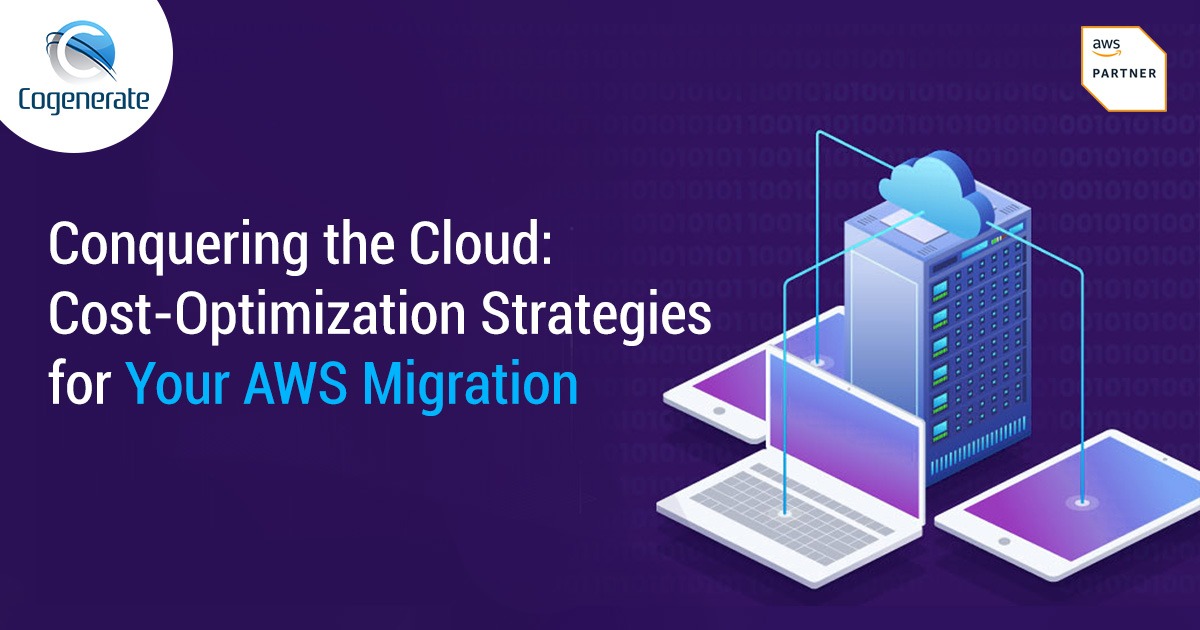Conquering the Cloud: Cost-Optimization Strategies for Your AWS Migration

The cloud revolution has swept across businesses of all sizes, offering a scalable, secure, and dynamic environment to run operations. But for many, the initial excitement about cloud migration can be tempered by concerns about cost. Migrating to AWS can be a game-changer, but it's crucial to have a plan to optimize your cloud spending and avoid unnecessary costs.
This blog delves into the world of cost-optimization strategies for your AWS migration. We'll explore practical tips and leverage the robust tools offered by AWS to ensure your cloud journey is not just efficient, but also cost-effective.
Before You Migrate: Planning is Key
The foundation of cost optimization lies in meticulous planning. Here's what you should consider before diving into the migration process:
Cloud Migration Assessment: Conduct a thorough assessment of your on-premise infrastructure. Identify workloads that are ideal candidates for migration based on factors like resource utilization, scalability needs, and licensing costs.
Right-sizing Resources: Avoid the trap of simply replicating your on-premise infrastructure in the cloud. Analyze your resource usage patterns and choose the most cost-effective AWS instance types that meet your performance requirements. Tools like AWS Cost Explorer can help you identify overprovisioned resources.
Storage Optimization: Not all data requires the same level of storage performance. Leverage different storage options offered by AWS like S3 for infrequently accessed data or Glacier for archival purposes. This can significantly reduce storage costs.
Reserved Instances (RIs): If you have predictable workloads, consider RIs. These offer significant discounts compared to on-demand pricing for instances used for a specific period.
Spot Instances: For workloads that can tolerate interruptions, utilize Spot Instances. These are surplus compute capacity offered at significantly lower prices.
Optimizing Costs During Migration
The migration process itself can be optimized for cost-efficiency. Here are some strategies to keep in mind:
Phased Migration: Don't try to lift and shift everything at once. Prioritize workloads that will benefit most from the cloud and migrate them in phases. This allows for better cost control and identification of potential issues early on.
Utilize Migration Tools: AWS offers free tools like AWS Migration Hub and Server Migration Service to simplify and automate the migration process. These can significantly reduce manual effort and associated costs.
Minimize Downtime: Downtime during migration can disrupt business operations and incur costs. Utilize tools and strategies to minimize downtime, such as data replication techniques and blue-green deployments.
Post-Migration Cost Management
Once your workloads are up and running in the cloud, continuous cost management becomes paramount. Here are some key strategies:
Monitoring and Cost Reporting: Leverage AWS Cost Management tools like Cost Explorer and Budgets to gain granular insights into your cloud spending. These tools provide detailed reports on resource utilization, cost breakdowns, and identify potential areas for optimization.
Auto-Scaling: Implement auto-scaling groups to automatically adjust resource allocation based on workload demands. This ensures you only pay for the resources you actually use.
Spot Fleet: For workloads with fluctuating demands, consider Spot Fleets. These allow you to leverage multiple Spot Instances at a time, increasing your chances of obtaining cost-effective instances while mitigating the risk of interruptions.
Reserved Instance Scheduling: Schedule RIs to run during peak usage times for predictable workloads. This can further optimize your cost savings compared to on-demand pricing. Cleaning Up Unused Resources: Identify and terminate idle resources like unused instances or EBS volumes. These "zombie" resources can bleed your budget unnecessarily. Beyond Cost Savings: The Long-Term Benefits
While cost optimization is a key benefit of effective cloud migration, it's not the only one. Here are some additional advantages to consider:
Increased Agility: The cloud offers on-demand scalability, allowing you to quickly provision resources as your business needs evolve. This translates to faster time-to-market and improved responsiveness to changing market conditions.
Enhanced Security: AWS offers a robust security framework that can significantly improve your overall security posture compared to managing on-premise infrastructure.
Improved Disaster Recovery: Cloud-based disaster recovery solutions are readily available on AWS, ensuring business continuity in case of unforeseen events.
Focus on Innovation: The cloud frees up your IT team from managing infrastructure, allowing them to focus on core business initiatives like application development and innovation.
Conclusion
Cloud migration with AWS can be a transformative experience for your business. By implementing the cost-optimization strategies outlined in this blog, you can ensure your migration is not just successful, but also financially sound. Remember, AWS offers a plethora of tools and services to help you manage and optimize your cloud costs.







